Understanding Certified Sapphires: A Comprehensive Guide
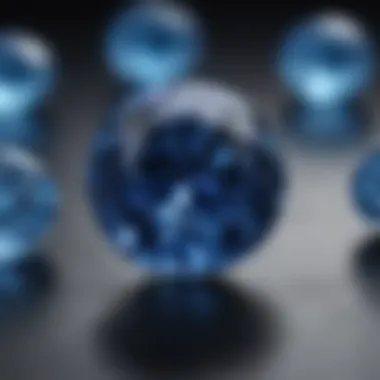
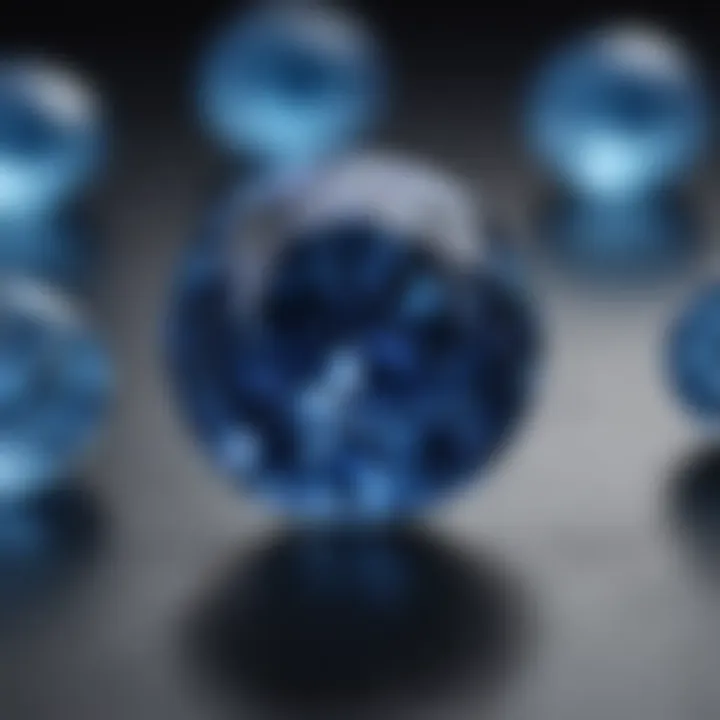
Intro
Certified sapphires have garnered significant interest in the gemstone market. Understanding these gems involves examining their unique characteristics, the certification process, and their origins. This guide aims to demystify certified sapphires for both enthusiasts and professionals.
Gemstone Overview
Definition and Characteristics
Sapphires are a type of corundum, a crystalline form of aluminum oxide. They are predominantly known for their rich blue color, but can be found in a range of hues, including yellow, green, and pink. The presence of other trace elements, like iron or titanium, influences their color.
Sapphire's hardness ranks at 9 on the Mohs scale, making it one of the hardest gemstones available. This durability makes it popular not only in jewelry but also in industrial applications. Other notable characteristics include luster, clarity, and cut, which contribute to the overall value of the gemstone.
Classification of Gemstones
Gemstones are categorized based on various factors, including their origin, composition, and optical properties. Natural sapphires arise from geological processes, while synthetic sapphires are lab-created with similar properties.
Sapphires can also be classified as untreated or treated. Treated sapphires undergo processes to enhance color and clarity, making certification essential for determining their true value.
"The quality and treatment of sapphires affect their market value significantly. Certification provides insight into these factors."
Historical Significance
Ancient Uses and Cultural Importance
Sapphires have a long history, dating back thousands of years. In ancient cultures, sapphires symbolized wisdom, loyalty, and nobility. They were often worn by royalty and clergy, believed to carry protective qualities.
In historical texts, sapphires were associated with the heavens. Ancient Greeks and Romans considered them sacred, attributing divine properties to these gems. Their cultural significance continues today, with sapphires often chosen for engagement rings and ceremonial jewelry.
Myths and Legends Surrounding Gemstones
Throughout history, various myths have surrounded sapphires. Some cultures believed that wearing sapphires protected against envy and harm, promoting peace and harmonious relationships. Other legends suggest that sapphires could grant insight and inspiration, making them favorable for scholars and seekers of knowledge.
Prologue to Sapphires
Sapphires have long captivated humanity with their beauty and significance. They are much more than mere gemstones; they hold rich histories and cultural values. This section dives into their importance in the broader context of gemstones and how understanding their heritage can enhance appreciation and informed decision-making.
The allure of sapphires extends through time. From ancient civilizations to the modern world, they have adorned crowns, rings, and religious artifacts. Their connection to nobility and spirituality often elevates their perceived value and desirability among collectors and jewelry enthusiasts.
A comprehensive understanding of sapphires also involves recognizing their core characteristics and historical narratives. This knowledge is essential for any potential buyer or gemstone aficionado. It builds a framework for appreciating certified sapphires and their distinctiveness within the gemstone market.
Historical Significance of Sapphires
Historically, sapphires have been viewed as symbols of wisdom, loyalty, and nobility. Ancient civilizations held these stones in high regard. The ancient Persians believed that the Earth rested on a giant sapphire, which imparted its blue hue to the sky. Similarly, in ancient Greece, sapphires were associated with Apollo, the god of wisdom. Such legends contribute to their long-standing reverence.
Throughout various cultures, sapphires have had practical applications too. They were often thought to protect their wearers from harm or evil. Kings and queens commonly wore sapphires to display their wealth and power. In medieval Europe, sapphires were also believed to have healing properties, making them precious not just for ornamentation but also for their supposed capabilities.
Cultural Importance
Culturally, sapphires play a pivotal role across diverse societies. In many cultures, these stones are used in symbolic rituals and traditions. They often represent fidelity and commitment, making them a popular choice for engagement rings. Couples value sapphire rings for their durability and beautiful colors, symbolizing lasting love.
Moreover, sapphires have influenced art, fashion, and design. Jewelers and artisans utilize sapphires in custom pieces to create unique and meaningful expressions. The cultural narratives associated with sapphires make them not just commodities, but items steeped in significance.
In summary, the historical and cultural narrative of sapphires enriches our understanding of these gemstones. The tale extends beyond beauty; it connects the past with the present, leading to a greater appreciation for certified sapphires. This understanding encourages informed purchasing decisions and preserves the legacy of these precious stones.
Defining Certified Sapphires
Understanding what is classified as 'certified' in the realm of sapphires is crucial. This distinction affects not only the value of the stone but also its perceived quality. Certification serves as an assurance that the sapphire has undergone thorough examination by professionals. Differentiating certified sapphires from their non-certified counterparts highlights significant differences in quality, market value, and authenticity.
Differentiating Certified from Non-Certified
Certified sapphires are evaluated by recognized gemological laboratories. These institutions assess the stone according to predetermined standards. This process includes detailed examinations of the sapphire's color, clarity, cut, and carat weight. Non-certified sapphires, however, lack this thorough evaluation. Buyers cannot be certain of their quality.
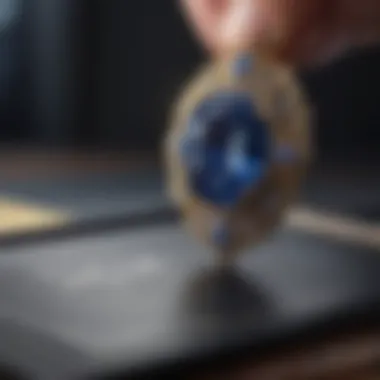
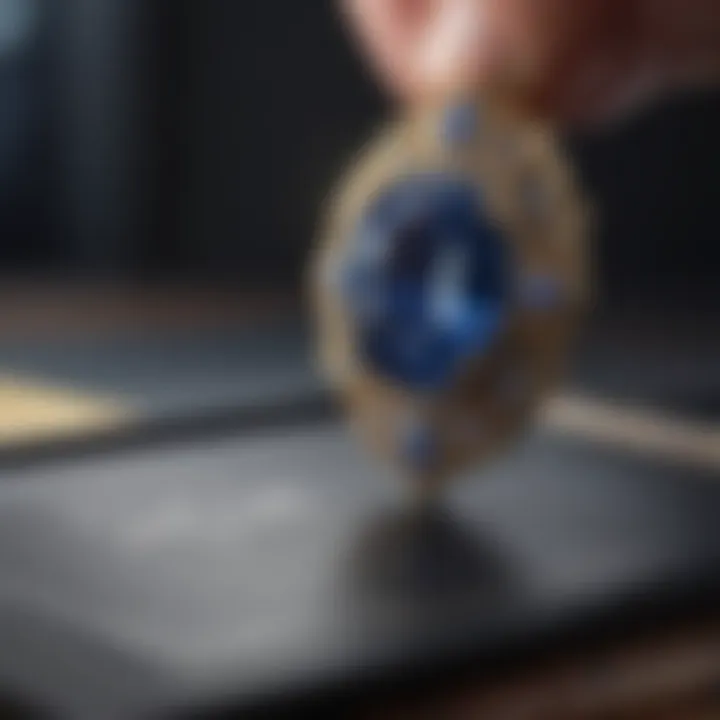
Several indicators set certified sapphires apart, including:
- Documentation: Certified sapphires come with a gemological report detailing their specific characteristics.
- Value Assurance: Certified stones usually command higher market prices due to the guarantee of their quality.
- Transparency: With certification, there is a clearer understanding of any treatments the sapphires may have undergone.
"The presence of a credible certification can elevate the buyer's confidence and assures better resale value."
Understanding Certification Standards
Certification standards refer to the guidelines and procedures used by gemological laboratories to evaluate sapphires. Understanding these standards can significantly enhance a buyer’s experience. Typically, the most recognized labs include the Gemological Institute of America (GIA) and the American Gem Trade Association (AGTA). Each laboratory has established its own criteria for grading sapphires, but commonly assessed factors include:
- Color: This is often regarded as the most critical factor in determining a sapphire's value. The hue, tone, and saturation are all measured.
- Clarity: This determines how clear a sapphire appears. Minor inclusions can affect its quality assessment.
- Cut: The way a sapphire is cut influences its brilliance and overall aesthetic appeal.
- Carat Weight: Larger sapphires are generally rarer and, therefore, more valuable.
While every lab may apply slightly different standards, understanding these classifications helps buyers know what to look for in a certified sapphire. A certified sapphire not only offers beauty but also a layer of trust for investment.
Sapphire Characteristics
Understanding the characteristics of sapphires is essential for lovers and investors alike. These features determine the value, beauty, and wearability of sapphires. Each characteristic influences not only the aesthetic appeal of the gemstone but also its overall market demand. By delving into details such as color variations, clarity, cut grades, and carat weight, one can make informed decisions regarding purchase and investment. It helps buyers recognize what to prioritize in their search for certified sapphires.
Color Variations
Color plays a pivotal role in defining the beauty and value of sapphires. While blue sapphires are renowned, the gemstone comes in a range of colors including yellow, pink, and green. The hue intensity can vary widely. Rich, deep colors tend to attract higher prices, especially in blue sapphires. The presence of secondary colors can also enhance or detract from the primary hue. For instance, a vivid blue sapphire with violet undertones may be more desirable than a lighter blue with grayish tones.
Moreover, certified sapphires will often be categorized based on their color characteristics, which can greatly affect marketability. When examining sapphire color, it is important to evaluate:
- Hue: The basic color of the sapphire.
- Tone: The lightness or darkness of the color.
- Saturation: The purity or strength of the color.
For collectors, understanding these nuances is vital. A well-colored sapphire can significantly appreciate over time.
Clarity and Cut Grades
Clarity refers to the absence of inclusions and blemishes within the stone. High-clarity sapphires are scarce and thus more valued. During certification, gemologists assess clarity using a microscope to evaluate any visible inclusions. Most sapphires feature some inclusions, but fewer is generally better. These important factors can create a significant difference in pricing.
Cut grades, on the other hand, relate more to how well a sapphire has been cut to exhibit its brilliance and beauty. A well-cut sapphire reflects light beautifully, enhancing its appearance. Common cuts include oval, round, cushion, and pear shapes. Each cut can affect the perceived size and beauty of the gemstone.
Investors should pay close attention to:
- Clarity grade: Ranges typically from "included" to "flawless."
- Cut quality: This can range from poor to ideal.
A combination of high clarity and superior cut often leads to more valuable sapphires.
Carat Weight Considerations
Carat weight measures the size of the sapphire. Naturally, larger sapphires tend to be more expensive due to their rarity. However, carat weight alone does not determine value. Two sapphires can weigh the same but differ significantly in price due to color quality, clarity, and cut. Purchase decisions should not focus solely on weight but should also encompass these other characteristics.
When considering carat weight, potential buyers should keep a few points in mind:
- A sapphire that appears dramatically larger may be more desirable, even if within the same carat range.
- Larger sizes tend to be more sought after, but not always. Provenance and unique features can enhance desirability.
The Certification Process
The certification process is a cornerstone in the world of sapphires, especially when it comes to establishing trust and value. Understanding the steps involved in obtaining a certification can greatly assist buyers, collectors, and enthusiasts. This process not only verifies the authenticity and quality of a sapphire, but also provides essential data that influences pricing and investment decisions.
Gemological Laboratories
Gemological laboratories play a crucial role in the certification process. These institutions are equipped with advanced technology and expert gemologists who specialize in assessing gemstones. Each lab adheres to specific standards that ensure consistency and reliability in their evaluations. Renowned labs that are frequently referenced include the Gemological Institute of America (GIA) and the American Gem Society (AGS). These facilities utilize advanced instruments to analyze various characteristics of sapphires, such as color, clarity, and cuts.
In addition to technical expertise, reputation of a laboratory can significantly impact a sapphire’s desirability. Buyers often prefer certificates from well-regarded labs because they feel reassured about the stone's quality and origin. Knowing which laboratory issued the certification can aid in making an informed purchase.
Evaluation Techniques
The evaluation techniques employed by gemological laboratories are systematic and comprehensive. Each gemstone is subjected to a series of tests designed to reveal important information. Some of the key evaluation methods include:
- Microscopic Examination: Under magnification, gemologists can detect inclusions, surface blemishes, and other features that define a sapphire's clarity.
- Spectroscopy: This technique helps to identify the presence of trace elements, which can indicate a sapphire's origin.
- Refractive Index Measurement: This method establishes how light bends through the gemstone, which can confirm its identity.
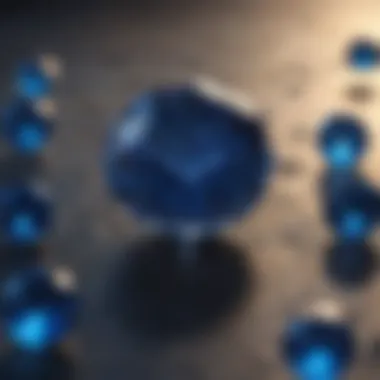
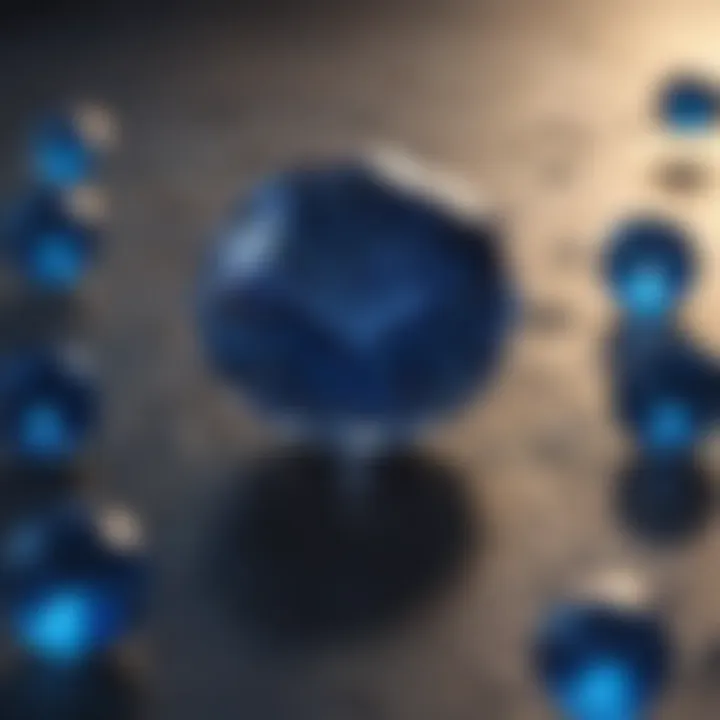
By employing these techniques, laboratories can create an accurate profile of a sapphire. The results are then compiled into a report that serves as a trustworthy record of the gemstone's quality. This report acts as a valuable asset for both buyers and sellers.
Issuing Reports
The issuance of reports by gemological laboratories is a formal culmination of the certification process. Each report contains detailed information about the evaluated sapphire, including:
- Identifying Details: This section outlines the gem’s characteristics such as color, cut, clarity, and carat weight.
- Grade Assessment: A grading system, commonly adhered to, indicates the quality range of the sapphire, which can help buyers gauge its market value.
- Photographs: Visual representation of the stone can aid buyers in verifying against the certification claims.
These reports are vital documents. They communicate transparent information about the gemstone, fostering trust between buyers and sellers. Possession of a reputable gemological report can often elevate a sapphire's market value significantly. Thus, understanding these reports is essential for anyone looking to make a savvy investment in certified sapphires.
The certification process establishes the credibility of sapphires, providing essential data that impacts market value and buyer confidence.
Overall, familiarity with the certification process enhances the buying experience, ensuring that consumers feel secure in their purchases.
Origin and Mining of Sapphires
The origin and mining of sapphires significantly influence their value, quality, and desirability. Understanding where sapphires come from provides context to their characteristics and can inform potential buyers and collectors about their investments. This section will delve into the main sources of sapphires and how geography affects their quality.
Notable Sapphire Sources
Sapphires are mined in several regions around the globe. Each source imparts unique qualities to the stones. Some of the most notable sapphire-producing countries include:
- Sri Lanka: Renowned for its blue sapphires, Sri Lanka has a long history in sapphire mining dating back over 2,500 years. The sapphires here are known for their vivid colors and exceptional clarity.
- Myanmar (Burma): Famous for the "Royal Blue" sapphires, Myanmar produces some of the most sought-after sapphires due to their rich color saturation and high clarity.
- Thailand: With a large domestic market and well-established lapidary industry, Thailand is both a source of sapphires and a trading center. The sapphires from Thailand often come from heat treatment processes, which enhance their color.
- Australia: Known for its large quantities, Australia is a significant supplier of sapphires, especially in shades of green and yellow, but is less famous for deep blue stones.
- Montana, USA: This region is known for its unique, lighter-colored sapphires. The variety in hue, often with an interesting inclusion, attracts niche collectors.
Understanding these sources can guide buyers in making informed decisions, as each location has a reputation that affects market perceptions.
Impact of Geography on Quality
Geography plays a critical role in the features and quality of sapphires. Factors like the composition of soil, temperature, and pressure during their formation influence their characteristics. The following considerations highlight how geography affects sapphire quality:
- Color: Sapphires mined in different locations can display a range of colors. For instance, stones from Sri Lanka are often prized for their bright, vibrant blues, while Burmese stones may exhibit a deeper, more royal hue.
- Clarity: The geological processes involved in the formation of sapphires vary by region. Stones from certain areas may naturally contain fewer inclusions, leading to higher clarity and consequently, greater value.
- Market Preferences: Collectors and jewelers may have preferences based on geography. For example, Burmese sapphires are often considered top-tier, which can raise their market price compared to sapphires from other regions.
Understanding these geographical impacts is essential for buyers who want to invest in certified sapphires. The mining methods employed and environmental factors can also signal quality and potential durability, all of which are critical for long-term ownership.
Key insight: The origin of a sapphire not only defines its physical properties but also frames its market value and desirability.
Treatments and Enhancements
Treatments and enhancements play a crucial role in the market for certified sapphires. They can significantly affect the appearance, value, and desirability of these gemstones. Understanding these processes is essential for both buyers and enthusiasts. The treatments can improve the clarity, color, and overall quality of sapphires. However, this enhancement comes with considerations regarding ethics and disclosure.
Common Treatment Methods
Sapphires undergo various treatment methods to enhance their aesthetic appeal. Some common techniques include:
- Heat treatment: This is the most common method used to improve a sapphire's color and clarity. Raising the temperature of the stone can reduce inclusions and enhance the hue. Many sapphires on the market have been heat-treated, and it is essential to understand this process.
- Fracture filling: This method involves the use of a resin to fill cracks or fissures in the gemstone. It helps to improve clarity but may raise questions about the long-term stability of the enhancement.
- Beryllium treatment: A more controversial method, beryllium treatment can significantly alter the color of sapphires. It is a complex process that may lead to colorful stones that are appealing but often raise concerns regarding authenticity.
- Irradiation: Some sapphires undergo radiation treatment to achieve specific colors. This method is less common but can produce unique and vibrant shades.
Each treatment can carry different implications for value and appraisal, making it essential for buyers to be informed about these common techniques.
Disclosure and Ethics
With the various treatments available, ethical considerations arise regarding how these enhancements are disclosed to the buyer. Transparency is critical in the market for certified sapphires. Sellers should clearly inform buyers about any treatments the sapphire has undergone.
"A well-informed consumer is more likely to appreciate the complexities of gemstone quality and value."
Buyers have the right to know the specifics of a gemstone's treatment history. Some gemological laboratories provide detailed reports that outline any enhancements made to a sapphire, giving buyers confidence in their purchase. Furthermore, ethical practices are essential not just for consumers but also for maintaining integrity in the gemstone trade.
Market Trends for Certified Sapphires
The market for certified sapphires has experienced dynamic changes in recent years. Understanding these trends is crucial for anyone looking to buy or invest in sapphires. The value of these gemstones fluctuates based on various factors, including demand, cultural influences, and economic conditions.
Demand Fluctuations
Demand for certified sapphires, like many luxury goods, is significantly influenced by consumer preferences and market conditions. Jewelry designs often change with fashion trends, driving the interest in specific colors and cuts of sapphires. The rise of e-commerce has also changed how consumers purchase sapphires, leading to increased accessibility and competition among sellers, impacting prices.

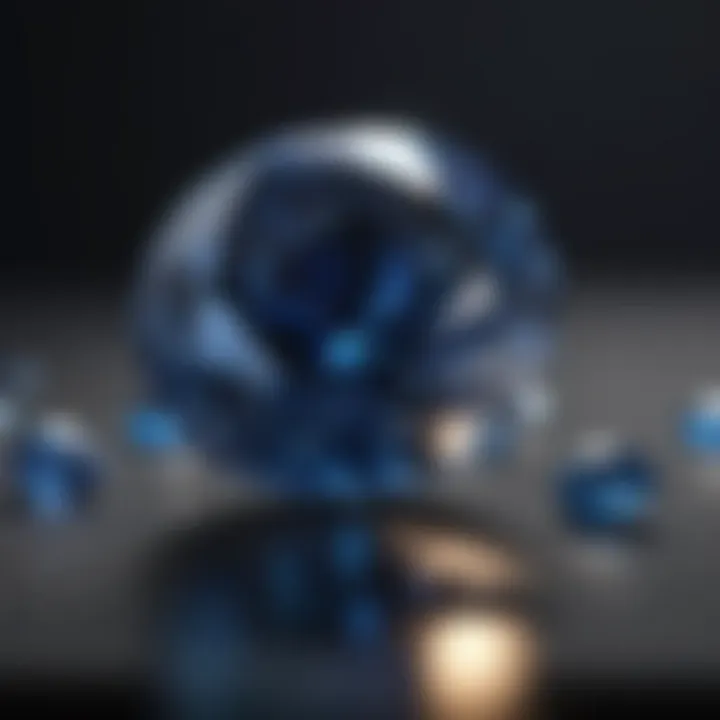
Demand can shift rapidly; what is trending today may not be tomorrow. Understanding these patterns is essential for buyers and sellers alike.
For instance, certain shades of blue might see a surge in popularity due to high-profile celebrity lives or fashion shows. Seasonal trends can also affect demand; engagement rings and bridal jewelry often experience increased sales during certain months. Thus, it is prudent for buyers to be aware of timing when making a purchase.
Investment Potential
Certified sapphires have been recognized not only for their beauty but also for their investment potential. As the awareness of gemstone quality and certification grows, more collectors and investors are considering sapphires as viable assets. The rarity and beauty of high-quality certified sapphires can make them a profitable long-term investment.
Investors should consider several factors:
- Rarity: Not all sapphires are created equal. Rare colors, such as Padparadscha or those with unique characteristics, can fetch high prices.
- Market Trends: Knowing the current market direction can help investors make informed decisions.
- Certification: Proper certification can significantly increase a sapphire's value, as it ensures quality and authenticity.
How to Purchase Certified Sapphires
Purchasing certified sapphires involves more than merely selecting a stone. It requires an understanding of several important factors including the seller's credibility, the characteristics of the sapphire, and the overall market dynamics. An informed buyer can make choices that align with their expectations and investment goals. Choosing the right sapphire can be rewarding, both aesthetically and financially.
Evaluating Sellers and Sources
When looking to purchase a certified sapphire, evaluating the seller is a critical step. Not all sellers have the same level of integrity or knowledge. Here are some factors to consider when assessing sellers:
- Reputation: Research the seller's history. Look for online reviews, customer testimonials, and any complaints. A reputable seller usually has a solid track record and is well-known in the gemstone community.
- Certifications: Ensure the seller provides valid certification for their sapphires. These documents should be from recognized gemological laboratories, such as the Gemological Institute of America or the American Gem Society. This verification adds trust to the purchase.
- Transparency: A good seller should be clear about the sapphire's origin, treatments, and any other important factors. They should not hesitate to answer questions.
- Return Policies: Understand the return policy. A seller who offers a reasonable return option reflects confidence in their product.
Connecting with fellow collectors or enthusiasts on forums like Reddit may provide additional insights on trusted sellers.
Understanding Pricing Factors
The pricing of certified sapphires can be complex, influenced by various factors:
- Quality: The quality of the sapphire plays a major role in its price. Factors such as color, clarity, cut, and carat weight directly affect how a sapphire is valued. Higher quality stones command higher prices.
- Market Demand: Prices fluctuate based on supply and demand. If specific sapphire types gain popularity, their market value can rise significantly. Keep track of current trends to stay informed.
- Treatment and Enhancements: Treated sapphires may be less expensive than untreated ones. Knowing whether a sapphire has been heated or subjected to other methods can alter its price point.
- Origin: The source of the sapphire can influence its price. Sapphires from renowned locations, such as Kashmir or Sri Lanka, tend to be more desirable and attract higher prices.
Understanding these elements can help buyers gauge whether a sapphire's price reflects its true value.
Caring for Certified Sapphires
Caring for certified sapphires is a fundamental aspect of preserving their beauty and value over time. Proper care extends the life of these gems, ensuring they maintain their lustrous appearance and structural integrity. Understanding how to clean, maintain, and store certified sapphires can significantly enhance their durability and showcase their vibrant colors to their fullest potential.
Cleaning and Maintenance
Regular cleaning is essential to keep certified sapphires sparkling. Dust, dirt, and oils from the skin can accumulate and dull their appearance. The process of cleaning should be gentle but effective. Here are some steps to follow for cleaning sapphire jewelry:
- Use Mild Soap: Mix a few drops of mild dish soap with warm water. This solution is effective without harming the sapphire or its setting.
- Soak the Jewelry: Allow the sapphire to soak in the soapy water for a few minutes. This step helps to loosen any built-up grime.
- Soft Brush: Utilize a soft-bristled toothbrush to gently scrub the stone and the setting. Ensure that you are not too aggressive, as this could scratch the surface or displace the stone from its setting.
- Rinse Thoroughly: After scrubbing, rinse the jewelry under lukewarm running water. It is important to ensure that all soap residue is removed.
- Dry with a Soft Cloth: Use a lint-free cloth to pat the sapphire dry. Avoid using coarse materials that could potentially scratch the surface.
Remember: For sapphires that are set in delicate designs or those with multiple stones, it might be best to consult a jeweler for professional cleaning to avoid any damage.
Storing Tips
Storing certified sapphires properly is crucial in preventing scratches and damage. Here are some strategies that can help:
- Separate Storage: Store sapphires away from other jewelry. This prevents friction and potential scratching from other harder stones.
- Pouches or Boxes: Use soft pouches or lined boxes for individual sapphires. This protects them from environmental factors and allows for a dedicated space.
- Cool, Dry Place: Keep sapphires in a cool, dry environment. Extreme temperatures and humidity can affect both the stone and any metal settings.
- Avoid Sunlight: Prolonged exposure to direct sunlight can fade the color of sapphires over long periods. Store them in a shaded area when not in use.
Implementing these cleaning and storage practices will help ensure that your certified sapphires remain in excellent condition, allowing you to appreciate their beauty for years to come. By maintaining their quality, you also maintain their value as cherished collectibles.
Epilogue
The conclusion serves as a pivotal component of this guide on certified sapphires. It synthesizes the various elements discussed in the previous sections, anchoring the reader's understanding. By reviewing the critical features of what makes a sapphire certified, this section highlights important considerations that potential buyers must keep in mind.
Recap of Key Points
Throughout this article, several key points emerged regarding certified sapphires. First, certification signifies a guarantee of quality, helping buyers differentiate between genuine gemstones and inferior imitations. The article discussed the importance of gemological laboratories, which establish and uphold certification standards. Additionally, we examined the characteristics of sapphires: color, clarity, cut, and carat weight, each significantly affecting a sapphire's value and desirability.
Furthermore, we explored the various origins of sapphires and their geographical influences on quality. Different mines yield distinct characteristics due to the local geology. Treatment methods and their ethical implications were also addressed, emphasizing the need for full disclosure from sellers.
Lastly, market trends indicated a fluctuating demand and investment potential in the world of certified sapphires, underscoring the shifting landscape in the gemstone market.
Final Considerations for Buyers
As buyers consider entering the market for certified sapphires, a few final tips can be crucial. Always ensure you are purchasing from reputable sellers who provide certification from recognized gemological laboratories, such as GIA or AGL. Understanding the pricing factors is critical; prices can vary widely based on rarity, quality, and market demand.
Buyers should also conduct ample research on the characteristics of sapphires, focusing on what matters most to them personally, whether it be color desirability or clarity. Investing in certified sapphires can be rewarding, but knowledge and caution are key to making informed decisions. When considering a purchase, balancing aesthetic preferences with certification standards can ensure satisfaction in both beauty and value.







